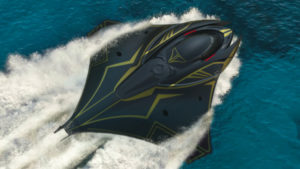Can 3D printing make the leap? Sector insights with Altor Capital

Investors are looking for ASX-listed 3D printing companies to execute on their next phase of growth. (Pic: Getty)
3D printing is probably a familiar buzz word for ASX investors, as a number of listed players tried to establish market leadership over the last few years.
The bulk of those companies are deploying the technology in the industrials and manufacturing space.
And while its use-case remains prevalent while the potential and the addressable markets are big, investors have put the onus on 3D printing companies to establish the pathway for their next phase of growth.
In that context, Stockhead got an update on the sector this week with David McNamee – a portfolio manager at investment & advisory group Altor Capital.
With positions in a couple of listed 3D printing companies, Altor is well-placed to discuss the sector outlook as the industry matures.
“We’ve been looking at the sector for a number of years, and the technology has had a fair bit of money thrown at it for the better part of a decade,” he said.
“But it probably only reached a point in the last 12-24 months (where) it’s making sense from a unit economics perspective, but also from a tech perspective.”
During the same time frame, the pandemic struck which resulted in severe disruptions to global manufacturing supply chains.
And that’s left the sector in something of a middle ground, particularly because it’s mainly applied to sectors where operational changes require large-scale capital management decisions.
“If you think about it from a large corporate’s perspective, they need to make pretty big structural decisions around their own supply chains with regard to 3D printing,” McNamee says.
“And these are decisions that are hard to reverse because you’re fundamentally changing the way you’re building and receiving products.”
“So it takes time, and we’re in currently sitting in that point of the cycle in my view.”
Market opportunity
Taking that into account, the addressable market is “obviously massive”, McNamee said.
Globally, he cited demand for the US-based 3D printing ETF (PRNT) run by ARK Invest, which tracked around $20 for three years before climbing to US$40 over the last 12 months.
And on the domestic front, Altor’s largest position in the space is in 3D Metal Forge (ASX:3MF), which listed in March raising $10m from investors at 20c per share.
After a strong debut, shares in 3MF have come back to the pack but McNamee likes the flexibility in its business model as part of the multi-year integration process required for 3D printing solutions in global supply chains.
“They haven’t had a lot of news flow lately but we think their fundamentals are strong and management team is very strong,” he said.
“(CEO) Matthew Waterhouse has a lot of experience and they’ve got some good traction with some top-tier clients like (US multinational machinery company) Flowserve and Conoco Phillips, the oil & gas major,” he said.
McNamee described 3MF’s value-add as more of an “agnostic” solution, deploying its IP in 3D printing to mould specific products that meet client needs, and working together on the roll-out with their end customer.
“They embed themselves into that process and generate revenue through consulting fees. But with the option to then become the prime supplier for delivering on 3D printing supply chains with those companies,” he explained.
Another position in the Altor portfolio is Amaero International (ASX:3DA), which has recently consolidated above 60c per share after climbing from post-pandemic lows near 10c.
“That’s some great tech that’s come out of Monash University, and there’s good people involved in the business,” he said.
And like other companies in the space, “I think they could see a real leg-up in their share price if some of these material contracts they’ve been working on for a while convert to long-term deals”.
While Amaero serves more clients in the defence and aerospace sectors, 3DF is more focused on the industrial and energy sectors.
“Obviously oil & gas took a hit during the pandemic but I think it’s a sector where there’s significant market opportunities for technology to improve manufacturing processes,” McNamee said.
He added that 3MF’s Singapore headquarters give it some differentiation in the space, giving it better access to a global client base.
“As part of their business model they’ve built relationships with the Singapore government and the port of Singapore,” McNamee said.
“And those are key to actually working out exactly some use cases for 3D printing technology, then scaling that out on a commercial level.”
“So I think it gives them a good platform to grow the business from a global perspective, and establish that unique operating model in terms of generating revenue from consulting, then ultimately becoming the prime supplier to delivering specific 3D printing solutions,” he said.
SUBSCRIBE
Get the latest breaking news and stocks straight to your inbox.
It's free. Unsubscribe whenever you want.
By proceeding, you confirm you understand that we handle personal information in accordance with our Privacy Policy.








